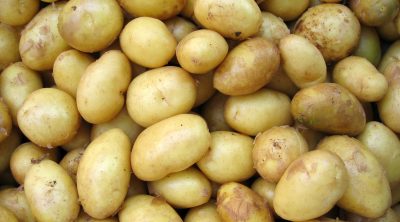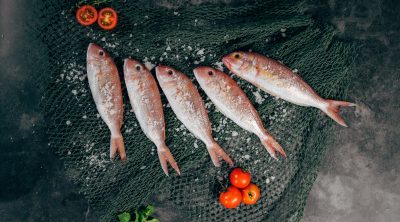Okay, so skittles are fun, and they look great sprinkled through ice cream, but we all know we’re not really tasting anything except sugar. So, what do you do if you want to “taste the rainbow”, but stay healthy at the same time?
Simple: You identify foods from across the spectrum of colours that can be seen in a rainbow (Red, Orange, Yellow, Green, Blue, Indigo, and Violet), and include them in a variety of meals throughout the week.
As a general rule, the more naturally occurring colours on your plate, the healthier and better balanced your diet.
Here, we’ve identified several tasty and healthy foods, in every colour of the rainbow, and given you a little information about their health benefits, to help you choose the foods that are right for you.
Most of the foods listed here are fruits and vegetables, and so are vegan friendly, however, cheese, egg yolk, and some fish have also been discussed. So, whatever the rainbow means to you, it’s time to get excited about grocery shopping, and prepare to eat up!
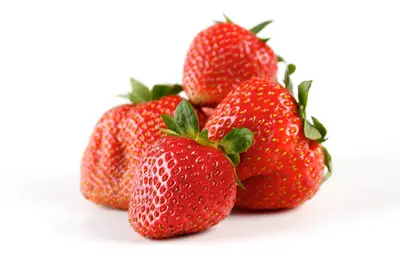
Contents
Rock Your Plate, and Your Palate, With RED
Red Snapper
…is a fish, meaning it’s high in Omega-3 fatty acids, which are essential for all-round health, and is a good source of lean protein, ideal if you’re looking to gain muscle.
Red snapper is also high in potassium, which helps regulate sodium absorption, and can therefore be beneficial for those with high blood pressure, and in phosphorous, which works alongside calcium to increase teeth and bone density.
Pregnant women and children should limit their intake of red snapper to a maximum of once a month, as it contains high levels of mercury.
Rainbow Trout
…shares all the health benefits of red snapper, but without the high mercury content.
Tomatoes
A better man than I am once said that “knowledge is being aware that a tomato is a fruit, not a vegetable. Wisdom is being aware that you don’t put tomatoes in a fruit salad.”
Whether you consider them a fruit or a vegetable, whether you like them cooked or fresh, whether you prefer plum, beef, or cherry, tomatoes are good for you.
They’re packed full of vitamin C – the same good stuff you get in oranges, which helps you fight off infections, and they also contain potassium, which, as we’ve seen with red snapper, helps regulate sodium absorption, and helps with high blood pressure.
They are also a quick and efficient way to hydrate yourself.
Red Peppers
…whether chilli or bell variety, provide a small metabolic boost, and thus help with weight loss as part of a healthy, balanced diet – so, sorry, but you can’t chase your double chocolate cheesecake with red peppers and hope for the best!
As well as vitamin C and Vitamin B6 – which helps with hormone regulation – red peppers also contain folate, which can help reduce the effects of anaemia, and help prevent it in the first place.
Red Berries – Redcurrants, Raspberries, and Strawberries
…are all frequently referred to as “nature’s candy”, because of their sweet taste, which comes from a high concentration of natural sugar (fructose), which provides a swift energy boost, without the blood sugar spike and crash associated with foods such as chocolate.
Red berries also contain vitamin C, and manganese, which is needed for effective energy production.
Red Onions
…contain quercetin, which is a powerful anti-oxidant, and can help protect against insulin-resistance; however, bear in mind that this does NOT make them a “cure”, or even a treatment, for insulin-resistant diabetes.
Saffron
…is a light, aromatic spice made from the dried stems of the saffron flower. It is a natural food colourant, and can help increase cognitive abilities, particularly memory.

Opt for Outrage With ORANGE
Oranges, Clementines, and Satsumas
…are all famous for their vitamin C content, which helps the body fight infections such as the cold and ‘flu viruses.
They also contain potassium, which helps regulate sodium absorption, and is therefore beneficial for those with high blood pressure, and, as with red berries, they provide an instant sugar fix without the crash associated with the sugars in chocolate and other sweets.
Oranges, satsumas and clementines also contain carotenoid compounds, which help promote good eye health. These are found in all orange-coloured fruits and vegetables.
Carrots
…they may not make you see in the dark, but their carotenoid compounds will definitely help keep your eyes healthy, as they contain vitamin A, which helps combat age-related macular degeneration.
Ginger
…has been used for centuries to aid digestion, and combat nausea. It is very effective at combatting motion sickness, and also helps the body effectively draw nutrients from food – those who eat plentifully, but remain underweight, may benefit from adding ginger to their diet.
Turmeric
…is a spice, which also has anti-oxidant and anti-inflammatory properties. It can provide a mild pain relieving effect, and is good, in this regard, for individuals who are required to take prescription medication which reacts badly with over-the-counter pain relief such as aspirin, paracetamol, and ibuprofen.

Yell For Health With YELLOW
Grapefruit
…offers a small metabolic boost, making it a good addition to a healthy diet for those looking to lose weight, and also helps regulate blood pressure. It also offers anti-oxidant properties, effective hydration, and high-quality fibre, which helps with digestion.
It is important to note that grapefruit has significant contra-indications with most anti-psychotic medications, and should be avoided by people taking these medicines.
Yolk
…from eggs, contains calcium, Omega-3 fatty acids, folate, and a range of vitamins and minerals that are required for ensuring healthy skin, teeth, and bones.
Egg yolk is also a good source of so-called “clean” protein, meaning that, while it is not a low-cholesterol form of protein, the cholesterol it provides is the “good” kind, that helps repair damage to the body’s cells, coats muscle fibres, and helps insulate the body, ensuring effective temperature regulation.
Lemon
…is another high-dose vitamin C good guy, meaning it, along with other citrus fruits, is packed with anti-oxidant properties.
Cheese
…as well as having a high calcium content, has also been linked to improved liver and heart health. Hard chesses, such as cheddar, are also low in lactose, making them a good way for mildly lactose intolerant, or lactose sensitive, individuals to get sufficient calcium.
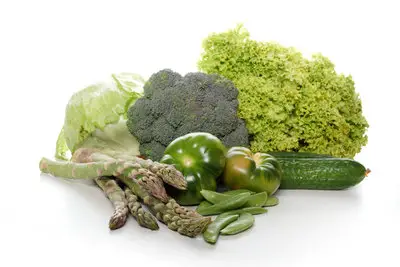
Go All the Way With GREEN
Samphire
…is rich in vitamins A, B, and C, which help with eye health, energy and hormone regulation, and fighting off infection, respectively. It also provides high levels of protein, and contains magnesium, which can help address sleep disturbances such as insomnia.
Individuals with high blood pressure, however, should avoid samphire, as it has a high sodium content.
Peas
…these little fellas pack a hefty vitamin-based punch! As well as vitamin K and vitamin C, they also include manganese and zinc, both of which are required for effective energy production.
Zinc also helps combat aggression issues. Snap peas also provide an instant, sustainable sugar hit, whilst avoiding a later blood sugar crash.
Asparagus
…contains B-Complex vitamins, which help in energy and hormone production and regulation, as well as vitamin K and vitamin C.
Marrows
…provide a lot of protein for very few calories, making them ideal for those who need to build muscle without risking an increase in body fat, and for those who want to lose weight without experiencing a drop in energy.
Avocado
…is high in protein and Omega-3 fatty acids, and thus offers an all-round health boost.
Kale
…is another high-protein, low calorie food, excellent for those looking to lose weight without risking lower energy levels, or a decrease in physical strength.
While kale does have a somewhat bitter taste, adding it to smoothies that also include sweeter fruits and vegetables can help make it more palatable.
Broccoli
…is an excellent all-round energy helper, containing B-complex vitamins, iron, and protein, as well as zinc, which can help in regulating emotional responses.
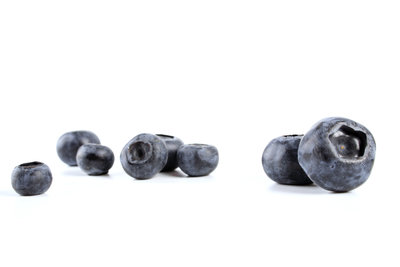
Bring it On With BLUE
There’s not many naturally blue foods – it’s why those who are involved in commercial food preparation are typically required, in the UK at least, to wear blue plasters to cover open wounds.
If the plaster falls off, it will be visible in every variation of recipe, meaning that no customer has the unpleasantness of having to call the waiter back, and explain that there’s something a little worse than a fly in their soup…
However, one obvious blue-ish food is…
Blueberries
These little guys are high in both vitamin C and folate, and have also been identified as an important component in helping to keep your heart healthy. They can’t solve all your problems, but they can help with a lot of them.
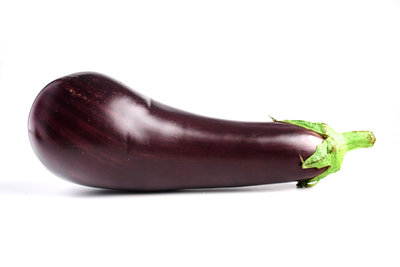
Introducing INDIGO
Okay, so these two are slightly cheating – just a little. But they’re definitely NOT cheats on a healthy, balanced, nutritious diet.
Purple Sweet Potato
…is a bright and cheery variation on the regular sweet potato, and a good way to get kids involved in eating vegetables!
High in vitamins A, C, and B6, which help with eye health, building up the immune system, and hormone regulation, respectively, purple sweet potato (any sweet potato, in fact) is also a good source of zinc and low-calorie protein.
Purple Cabbage
…is high in fibre, making it good for digestion. It also contains high levels of potassium, which helps regulate blood pressure – so, if you can feel yourself getting worked up, eat some purple cabbage: it’s bright, cheery, and will actually help!

Vamp it Up With VIOLET
Did you know you can eat Violets? The leaves have been used for centuries to treat infections, both by eating them, drinking a tea infused with them, or using them in a poultice on open wounds.
Meanwhile the flowers, along with several other varieties of edible prettiness, including roses and nasturtium, can be eaten fresh, sprinkled on salads, or dried and candied.




